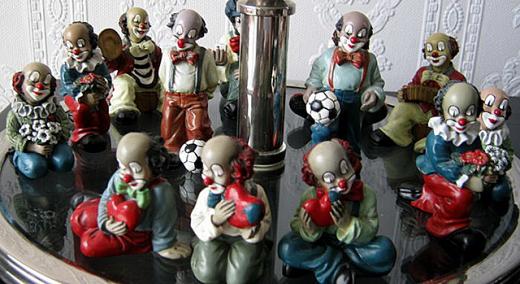During recent visits to Twitter and LinkedIn, I’ve become increasingly shocked by the devolution of the posts to vacuous nonsense. I felt a Network moment of, “I’m mad as hell, and I’m not going to take this anymore!”
|
ADVERTISEMENT |
Is your organization getting to the point where executive reaction to what’s perceived as another unremarkable result for a massive investment in improvement is pretty much, “Any clown could have gotten that result?”
Most initial—and many times dramatic—success with lean and Six Sigma results from working on the classic “low-hanging fruit.” In process terms, much of this waste has been exposed through value stream mapping and consists only of special causes that have been hidden and tolerated. W. Edwards Deming didn’t consider such beneficial results improvement, and would say that only after they have been addressed does true improvement begin. Also, this rate of alleged improvement will not continue.
…

Comments
Making the journey to a "better" place... what it really takes.
Hi Davis,
My applause to your sentiments regarding what appears to be an increasing propensity toward pursuing more of the same-ol, same-ol, quick-fix oriented, snake oil and touting it as a 21st century cure-all (aka panacea) for whatever happens to be ailing businesses. Yes, there definitely appears to be (as there always has been) a very high "failure" rate associated with most - if not all - of the most well-known and widely-pursued/attempted approaches to performance improvement... whatever they might be labeled. HOWEVER, what's not typically mentioned in the context of these high failure rates is exactly what is meant/implied by the use of that term. Certainly, it's always a good/reasonable strategy to shoot for a challenging target level of improvement. In many instances, it may even be considered unattainable by the majority of stakeholders. BUT, isn't it an endemic part of a TRUE CONTINUOUS IMPROVEMENT MINDSET that attempting to do something is typically better than not attempting to do anything? And, isn't it true that anyone who is committed to the notion and practice of continuous improvement is ready, willing, and able to live with might be considered a FAILURE? Why? It's because in the pursuit of a higher level of performance capability, COMPLETE (i.e., 100% or better) success is NOT always guaranteed. And the LESSIONS TO BE LEARNED from that COMPLETE OR PARTIAL FAILURE are often more valuable to the organization than achieving a successful/desired/targeted outcome on the first try.
With those thoughts in mind, it should be obvious that any TRUE FAILURE (however that may be defined) exists in the eye of the beholder(s). And in the eye of any truly committed practitioner(s) of CI/OpEx THINKING AND BEHAVING, the ONLY TRUE FAILURE that can occur does so ONLY under one of two conditions as follows: 1) there is no attempt made to garner and leverage lessons-learned knowledge from the experience of a failed CI initiative, or 2) the same mistakes made in an initial CI initiative are repeated and, thereby lead to another unsuccessful attempt. So, where does that set of conditions leave the state of the CI/OpEx profession/practice?
Answer: It leaves anyone and any organization that's TRULY/TOTALLY COMMITTED - to making a never-ending journey toward ever higher levels of competitive performance - facing the REALITY of the 21st-century business milieu. What that means is that the pressures to deliver short-term financial results - that have to meet or exceed shareholder/investor expectations - are likely to increase and continue to dominate the prevailing THINKING AND BEHAVING patterns of those invididuals who are holding primary fiduciary responsibility for an organization's on-going performance results. And until such a time as there is a general realization and acceptance of the fact that CI/OpEx endeavors often only accrue their maximum sustainable level of benefit (along multiple dimensions that impact both the top and bottom lines) over time, the perception - by those holding primary fiduciary repsonsibility - will be that any CI/OpEx endeavor that does not demonstrate immediate/short-term benefits - typically in the financial context - is a FAILURE.
So what's the ANTIDOTE for this sort of TOXIC THINKING AND BEHAVING pattern? Well, for certain it MUST be administered first at the highest level of any organization. And it MUST have the ability to counter-act the infectious and deliterious nature of short-termism virus (emenating from the financial services community). Then, it MUST enable/facilitate the development and implementation of a TRULY COMPELLING and SUSTAINABLE TRUE NORTH ORIENTATION (TNO). Once those antidote actions have taken effect, then it becomes possible to establish a WORKING ENVIRONMENT that pervades the ENTIRE ENTERPRISE; that is, a WORKING ENVIRONMENT which is most conducive to having ALL members of an enterprise join in both the individual and collective pursuit of a common/shared PURPOSE (as defined in the TNO). Such a WORK ENVIRONMENT is one which "EMANCIPATES" the workforce in terms of utiliziing their fullest level of discretionary THINKING AND BEHAVING in line with the established TNO. It also fosters the on-going development of critical/core competencies and distributes TRUE LEADERSHIP capabilities at ALL LEVELS throughout the enterprise.
Add new comment